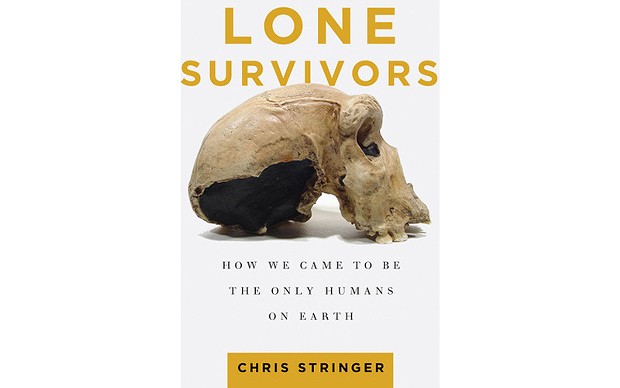Lone Survivors: How We Came To Be The Only Humans On Earth
By Chris Stringer - Times Books
By William S. Kowinski[
{
"name": "Top Stories Video Pair",
"insertPoint": "7",
"component": "17087298",
"parentWrapperClass": "fdn-ads-inline-content-block",
"requiredCountToDisplay": "1"
}
]
There's an illustration I recall from an old schoolbook that still defines the popular conception of human evolution (at least for those who believe in it at all). It depictes a progression of primates, hairy apes becoming slightly less hairy and more two-legged until the crouching Neanderthals become the modern human, upright and standing tall, poised to invent subprime mortgages. It's a tale of destiny and inevitable progress, and it's pretty much wrong.
Chris Stringer is a prominent paleoanthropologist affiliated with the Natural History Museum in London. In this book he attempts a comprehensive survey of the still-changing picture of human species development. He begins with the state of knowledge in the 1970s, when he started his professional work, and he describes in some detail the factors involved in how that picture has changed. He explores fast-moving advances in contributing fields: not only in new techniques for locating and unearthing fossils, but in dating them with exotic new technologies (like the synchrotron, of which a very big example is the Large Hadron Collider).
Genetics now contributes in various ways, advancing with stunning speed. The human genome was essentially sequenced less than 20 years ago. Now there's a sequenced Neanderthal genome. Stringer also considers cultural questions based on artifacts such as tools, paints and musical instruments.
Stringer writes a lot about how information was developed, so the big picture emerges in fragments.
While all the new data answers some questions, basically it seems to have complicated the story. It's now considered likely that several of the many human species (an earlier book counted 22) coexisted at the same time, maybe in the same place. Modern humans carry some Neanderthal DNA (and before the caveman jokes start, Neanderthal males and females may have been more equal physically and culturally than are modern humans).
So how did we become the only humans on Earth?
Did modern humans develop traits that gave them competitive advantage through natural selection? In some ways probably, but traits that survived for no discernable reason (genetic drift) also helped. I've noticed that in recent years, historians are taking the role of climate more seriously as a causal factor in the rise and fall of civilizations. Similarly, this book describes climate changes as crucial elements in the prehistoric story of human species.
There are still plenty of puzzles, but Stringer concludes that we're here at least partly by accident, by luck. "Sometimes the difference between success and failure in evolution is a narrow one," he concludes, and notes that we've now got "an overpopulated planet and the prospect of global climate change on a scale that humans have never faced before." Let's hope our species is up to the challenge.
Comments (2)
Showing 1-2 of 2
more from the author
-
TV or Not TV?
A Comic Dilemma at NCRT
- Sep 25, 2014
-
Unequivocal Success
Shakespeare in trouble at Redwood Curtain
- Sep 11, 2014
-
A Midsummer Night's Stage
Magic worlds at Redwood Park
- Aug 14, 2014
- More »
































